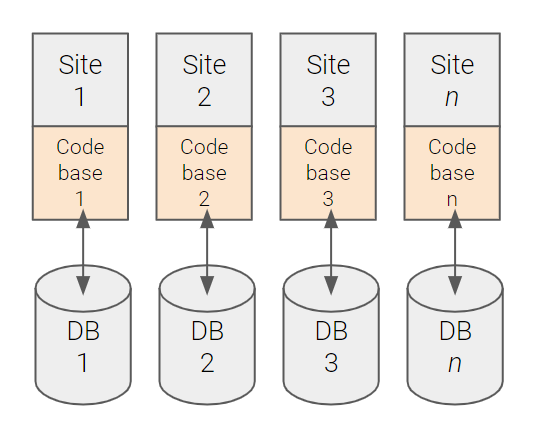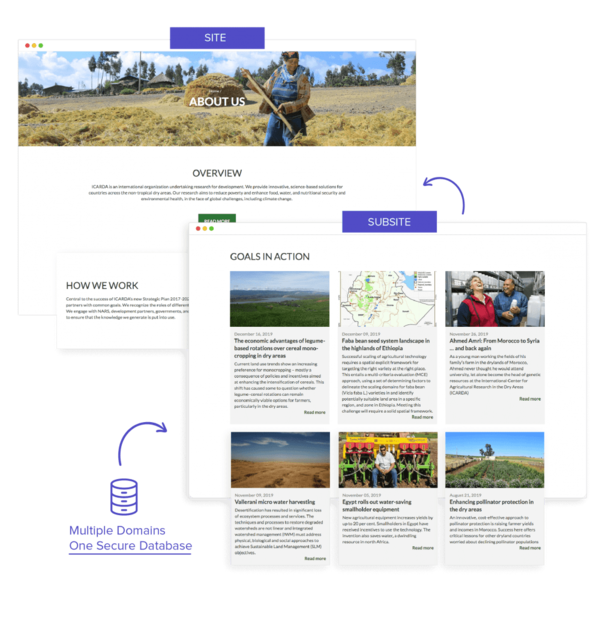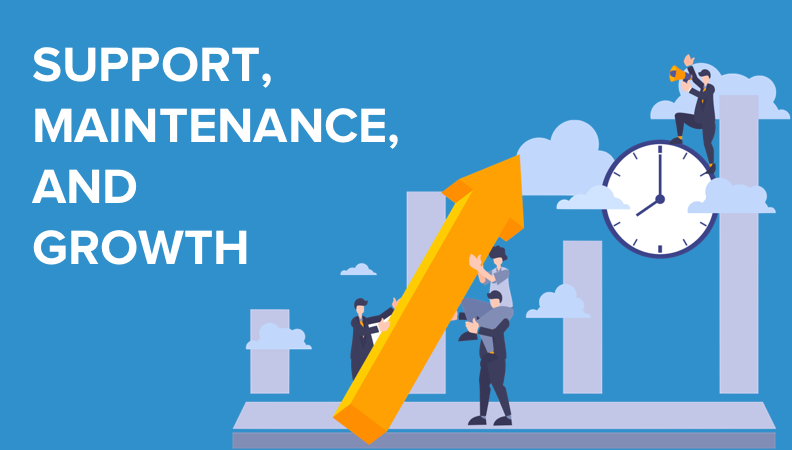- Solutions
- For Industry
- By Need
- Products
- VarbaseEnterprise CMS Distribution for Drupal
- Uber PublisherEnterprise Digital Media Platform Builder
- VardocDrupal Knowledge Base Platform
- Campaign StudioOpen Marketing Platform - by Acquia
- Open SocialSocial Business Platform - by Open Social
- Services
- Strategy
- Design
- Development
- Migration
- Support and MaintenanceSupport and Maintenance
- DevOps
- Digital Marketing

Datasheet

- Clients
- Ideas
- About
- Contact Us

Comparing Drupal Multi Site Solution Architectures

Drupal allows you to support and manage multiple websites built and based on the same CMS. These websites may share the same branding but vary in content or be entirely distinct from one another.
This is a strategic business and marketing advantage for enterprises that have various brands and business activities that each demand a unique user journey and digital experience.
With the rising necessity to create functional websites with unique user experiences, many enterprises are reconsidering their IT infrastructure and website architecture to ensure their digital presence doesn’t suffer.
Read on to identify which option is best tailored for your needs:
1. Multi-Domain Architecture

| Pros | Cons |
|---|---|
|
Less Subscription Requirements* |
Single Point of Failure |
| Less Development Effort | Less Flexible and More Restrictive |
| Cost Effective | Complex Logic |
| Content Sharing Across Sites | Possible Performance Degradation |
*Hosting and Maintenance
2. Multi-Site Architecture

A multisite setup allows for more individual freedom (differences) between sites and is mostly useful for sharing code (modules and themes) across multiple websites.
| Pros | Cons |
|---|---|
|
Autonomous Content and Users |
More Effort For New Sites Spin Out |
| Consolidated Maintenance | More Complex Options For Content Sharing |
| Fewer Subscription Requirements* | |
| More Flexible |
*Hosting and Maintenance
Download the Multiple Sites Solutions Architecture Guide
3. Silos Architecture

Ideal for enterprises that have different businesses operating under their umbrella; especially if each website has a different team managing it.
| Pros | Cons |
|---|---|
|
Autonomous Management |
More Subscription Requirements* |
| More Secure | More Effort For New Sites Spin Out |
| Complete Decentralization | |
| More Overhead in Deployments and Maintenance |
*Hosting and Maintenance
4. Multi-Locale Targeting Audience
Similar to Multi-Domain, Multi-Locale allows for using language-based regional targeting. Utilizing the power of multilingual capabilities for multiregional targeting. This is recommended for sites targeting multiple regions.

| Pros | Cons |
|---|---|
|
Less Subscription Requirements* |
Single Point of Failure |
| Less Development Effort | Less Flexibility, More Restrictive |
| Cost Effective | Complex Logic |
| Content Sharing Across Sites | Possible Performance Degradation |
| Automatic hreflang Meta Tagging |
*Hosting and Maintenance
Rather than struggle with different standards and skill sets required to manage different websites; enterprises have realized that Drupal's multi-site functionality enables them to have a focused IT team with fewer burdens and distractions due to the fact that all websites under their umbrella are built using a single CMS installation and framework.
The same benefits extend to marketing departments who will find that publishing content from the same CMS is easier and more efficient.

ICARDA is an international nonprofit organization that needed to build a unique experience and website for each of its missions across the globe. They needed a CMS robust enough to sustain performance and streamline their heavy content publishing load. Typically, nonprofits find themselves lacking in the IT department, but ever since the launch of ICARDA's new digital presence in late 2019; they haven't looked back since.
Each new website they configured and released is easily maintained and managed by the same marketing team. The total cost of ownership is much lower, each website performance is optimized, and the security and maintenance cost for all those sites are shared.
Talk to an expert if you need help choosing the best multi-site solution architecture for your business.
- Drupal
- Drupal 9
- Drupal 8
- Multi Site
- Multi Site Functionality
- Multi Domain
- Geotargeting
- Localization
- UX
- Multi Site Development
- Multi Locale
- Silos
- Website Architecture
- Migration



